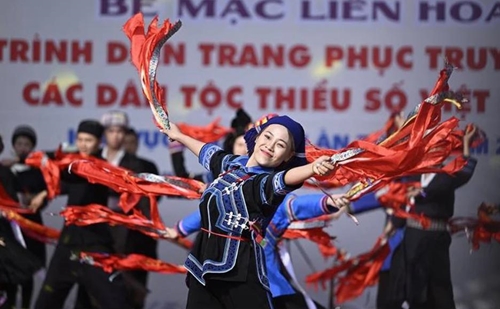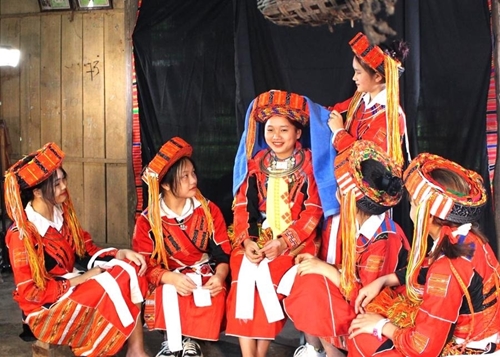These costumes have evolved alongside the daily lives and cultural practices of these communities, reflecting their deep-rooted traditions and history. The effort to maintain and safeguard traditional costumes plays a significant role in the broader mission of protecting and conserving cultural heritage, ensuring that these distinctive elements remain an essential part of ethnic identity.
    |
 |
|
A view of a festival on traditional costumes of ethnic minorities (Photo: qdnd.vn) |
Traditional attire is not merely a form of clothing but a symbolic representation of the identity, customs, and heritage of each ethnic group. Beyond their functional use, these garments embody unique artistic and historical values that are deeply ingrained in the fabric of ethnic minority cultures. Passed down through many generations, they serve as a bridge connecting the past with the present, allowing contemporary generations to appreciate and inherit the wisdom, craftsmanship, and cultural pride of their ancestors.
Nguyen Thi Hai Nhung, Head of the Ministry of Culture, Sports, and Tourism’s Department of Ethnic Culture, has emphasized that traditional costumes are an integral aspect of cultural identity, carrying multiple layers of significance and distinguishing one ethnic group from another. The variations in these garments are shaped by a combination of natural surroundings, geographical landscapes, environmental factors, and societal influences. Each ethnic community, based on its unique circumstances and cultural background, has developed distinct materials, textiles, weaving and dyeing techniques, tailoring methods, embroidery styles, decorative patterns, structural designs, and color schemes. These elements collectively form a visual language that communicates the heritage and traditions of the respective ethnic group.
    |
 |
|
Traditional attire is not merely a form of clothing but a symbolic representation of the identity, customs, and heritage of each ethnic group. (Photo: baochinhphu.vn) |
Furthermore, the role of the community, especially that of skilled artisans and elderly members of ethnic minority groups, is instrumental in ensuring the continuity of these traditional costumes. These individuals possess extensive knowledge about the history, meaning, and craftsmanship behind their traditional attire, making them key figures in passing down this heritage. Community leaders and respected elders should take an active role in inspiring and educating younger generations about the importance of preserving and embracing their traditional clothing. By wearing these garments during significant cultural events, festivals, and national celebrations, ethnic communities can strengthen their cultural identity, instill a sense of pride among younger members, and reinforce the awareness of the need for preservation.
Incorporating traditional costumes into daily life, as well as highlighting their presence on important cultural and national occasions, will ensure that they remain a living part of ethnic minority heritage rather than mere artifacts of the past. The widespread use of these costumes will not only help sustain traditional craftsmanship and artistry but will also reinforce a deep connection between ethnic minority communities and their historical roots, fostering cultural pride and continuity for generations to come.
Translated by Anh Ngoc